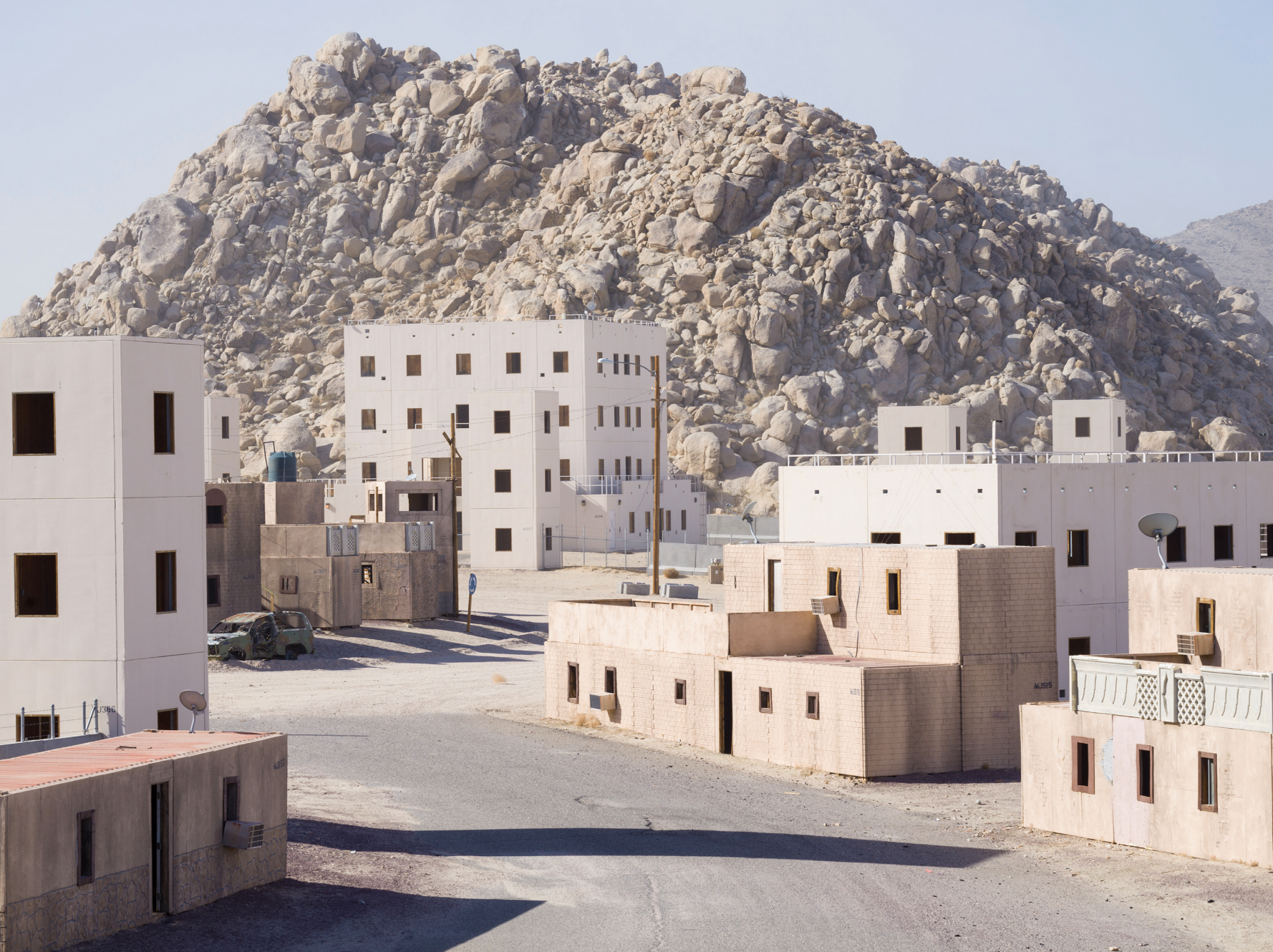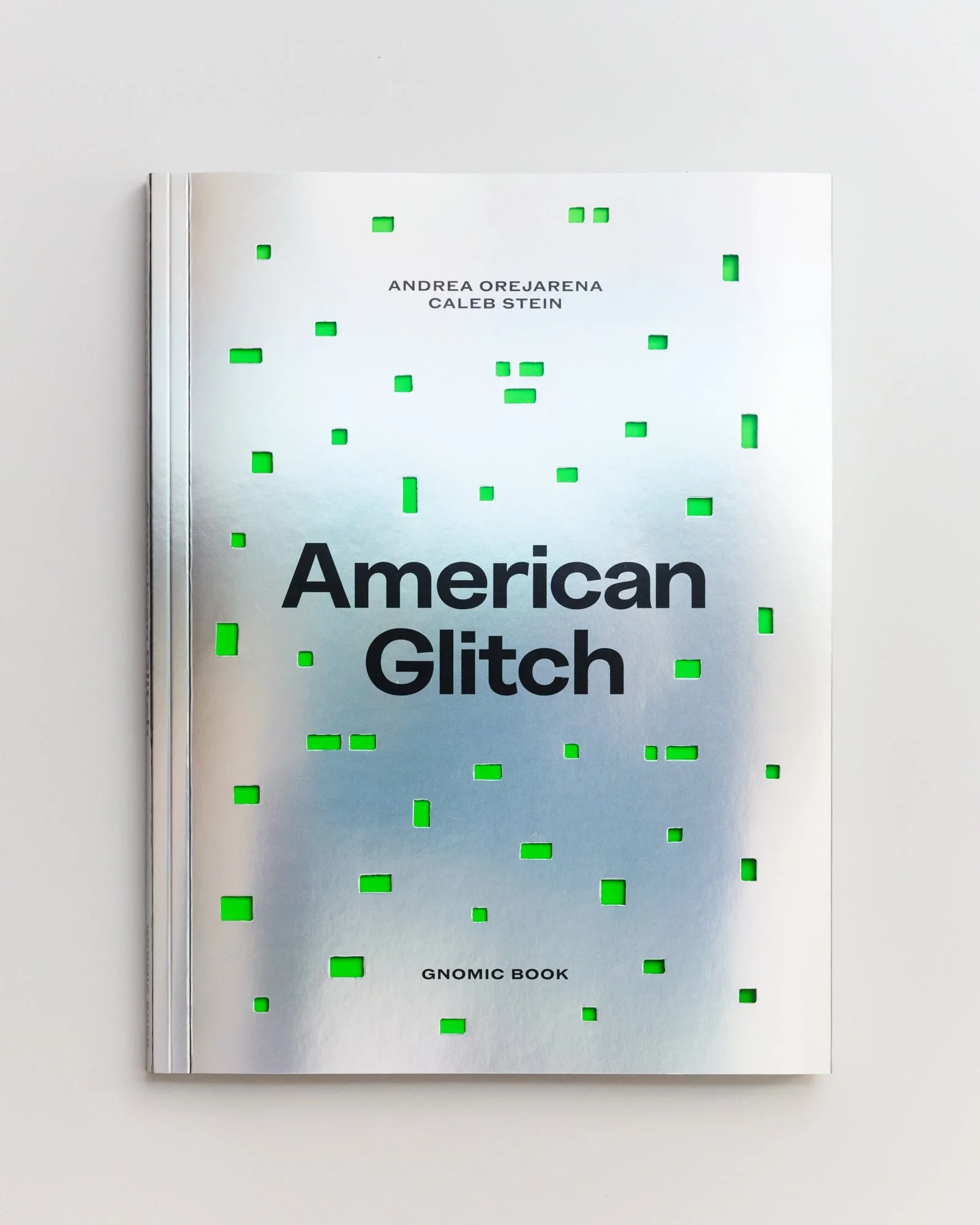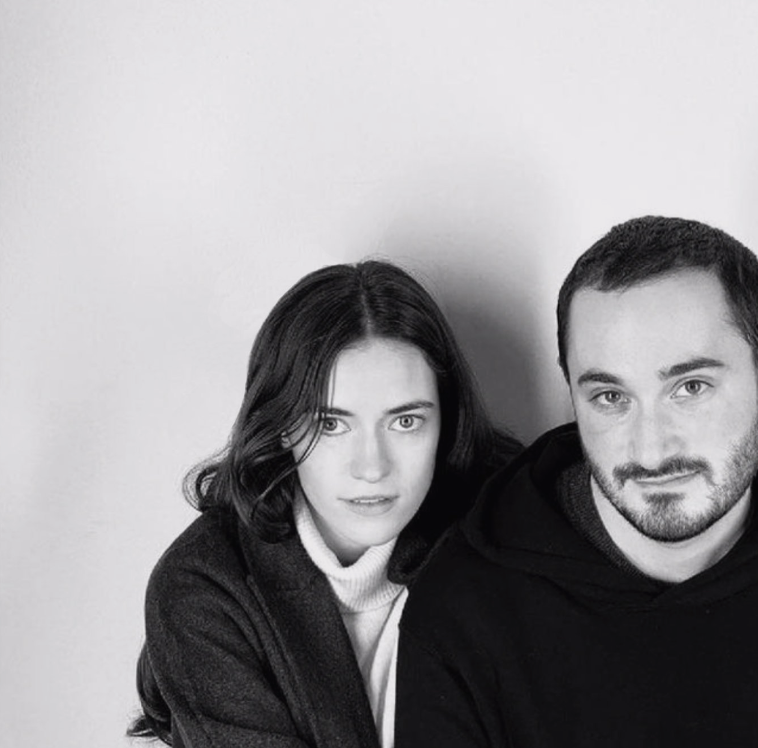Fake News, Real Art: Inside “American Glitch”
June 16th, 2024
By Ellen Stone
I'm not exactly sure what is real. I think I know. I think I understand when something has been computer-generated or when it’s been doctored. I know how to spot the extra fingers or dead eyes of an AI portrait. But then again, even things that are ostensibly real can be fake. Every image you have ever seen has been mediated by someone. From documentary shots of war to picture-perfect scenery, human beings have touched, aestheticised, and manipulated the outcome every time.
Reflecting on the malleability of reality, consider the case of photographer Miles Astray. Earlier this month Astray won the AI category of the 1839 Photography Awards with a photograph he later revealed to be entirely real. His winning image, a confusing capture of a flamingo's head curling around itself, was initially passed off as AI-generated. The image’s surreal quality fooled the judges, who were convinced they were seeing a product of artificial intelligence, not the unaltered reality through Astray's lens.
This incident underscores the blurry boundaries we navigate daily in the post-truth era. It’s a time when even seasoned experts can be deceived by the authenticity of a moment, questioning whether what they see is a genuine slice of life or a digital fabrication. Astray’s photograph - and the ensuing disqualification - serves as a humourful yet poignant reminder of the complexities in discerning truth. It’s as if we’re all participants in a grand, ongoing experiment where our perceptions are constantly tested and our trust in reality is continually challenged.
“We’re all participants in a grand, ongoing experiment where our perceptions are constantly tested and our trust in reality is continually challenged”
The story of Miles Astray perfectly encapsulates this era’s paradox. It’s not just about the technological prowess of AI, but about our deep-seated need to believe in the images presented to us. In his playful deception, Astray not only highlighted the sophistication of AI but also our own susceptibility to visual manipulation. It’s a dance between fact and fiction, where the steps are dictated by our evolving relationship with technology and our unyielding quest for truth in a world increasingly filled with illusion.
Abraham Lincoln & Drone, 2021
Synthetic Street, 2023
Modern Home, Montezuma Canyon, 2021
American Glitch by Andrea Orejarena and Caleb Stein is a photographic series that explores the thin line between fact and fiction in the U.S. landscape. Inspired by the internet's obsession with "glitches in reality" and the notion of living in a simulation, the artists traveled across the U.S. capturing surreal and uncanny scenes that force us to question the reliability of images in an era dominated by fake news and digital illusions. Whether it is a statue of Lincoln with a blown-out back of the head or a faux-Iraqi village for war games, through their work, even things in the real world can feel made up.
As explained by the artists: “The first year and a half of this project was focused on amassing an archive of glitch in-real-life images, stories, and videos. With American Glitch we see ourselves as artist as researchers. We see this collecting of found images as a collaboration of sorts with the internet and our collective consciousness. The process was like a deep dive into a labyrinth of imaginative, poetic fragments shared by anonymous people from around the world. It was immensely time consuming and the process was fluid, we took as long as we needed to immerse ourselves in this language and research without fixed conceptions of how to proceed with our work. That flexibility and curiosity is key for us to strive for.”
American Glitch, Palo Gallery, 2024
In 1840, the first official “hoax” photograph was taken by Frenchman Hippolyte Bayard. Entitled “Self Portrait as a Drowned Man,” the image was accompanied by a longer statement including the lines: “The corpse which you see here is that of M. Bayard… and the poor wretch has drowned himself. Oh, the vagaries of human life….! … He has been at the morgue for several days, and no one has recognised or claimed him.” Created only around two years after the first-ever photograph of a person, this bit of dramatism was meant to make people believe that Monsieur Bayard had committed suicide - using this nascent medium to manipulate the public for empathy and adoration over 150 years before the dawn of the world wide web.
“Part of what we’re interested in is replicating the experience of looking at images today and the persistent state of not knowing what is real and what isn’t.”
“Initially, we thought that we would contribute to this found archive of ‘glitch’ material by creating ‘photographs’ that were built from 3D modeling programs. In some ways, this felt like a logical next conceptual step for the work because so much of what is cited as a glitch in real life online relates to video game and screen culture and the visual language of these spaces and the errors they sometimes display. Quite quickly though we realized that the U.S. landscape itself could provide what we were looking for. And so, from this archive we were able to determine sites that we wanted to photograph ourselves that had been described as glitches in real life in the U.S landscape. Sometimes the photographs we make are altered through PhotoShop or AI, but we never say when it is or isn’t, because part of what we’re interested in is replicating the experience of looking at images today and the persistent state of not knowing what is real and what isn’t,” say the artists.
Cherry Blossom Camouflage Collage, 2023
Egglitch, 2023
Mars Simulation Station, 2021
“Photography has always had a fraught relationship to veracity, and we were interested in exploring what that relationship looks like today with rapid advances in image production and circulation. Recently, someone posted to social media an image of the Eiffel tower on fire (generated by AI) and for a few hours, hundreds of millions of people thought it was real and continued to repost it as news,” says Orejarena and Stein. In an era of increased dependence on screen technology, American Glitch highlights the ease of manipulating images and the importance of visual literacy in a contemporary world which can, according to the artists, “slip between fact and fiction.”
“We were thinking about what sorts of images register as truthful today. From what we've seen there are two types of images that are widely assumed to be factual at this current moment. The first is the pixelated image, or what Hito Steyerl would refer to as ‘the poor image,' which has become more pixelated because of its mass circulation and the resulting compression and expansion of the pixels in the original image, almost like a fingerprint or map of the life the image has had. There’s a ‘truth’ to this image because it wears its journey ‘on its sleeve,’ so to speak. The second is the high-resolution, frontal, highly formal photograph. This relates to the Düsseldorf school, but also to evidence photography, to surveillance photography, to photographs made by and for the state. Our photographs of glitch sites across the U.S. employ this second form of ‘truthful’ image making,” explain Orejarena and Stein.
American Glitch, Palo Gallery, 2024
Philosopher Anne Cauquelin is known for her concept that in depictions of landscapes there is no such thing as “real”. All landscape art, whether poetry, photography, or painting, is an invention or “artificial mental construction” created by established iconography. Orejarena and Stein’s images in American Glitch, whether intentionally or not, are perfect contemporary examples of Cauquelin’s theories. They are formed with an aesthetic stark remoteness from the subject matter (a clear nod to the Düsseldorf School) but also with an understanding and awareness of the preconceived notions the audience would have in looking at them. They are documentary photographs created with the knowledge of how much of an oxymoron that title can hold. They are “real” whilst also being reflections of popular culture and internet aesthetics.
“This notion that we're living in a simulation appears online where images are posted as personal evidence of spotting a ‘glitch in real life.’ This vernacular builds on ideas explored in movies like The Matrix and The Truman Show. The notion of a glitch reflects a generation’s experience where the digital and physical worlds are merging,” say the artists.
Herndon Climb, 2023
Military Iraqi Village Simulation, 2022
It isn’t just the veracity of images American Glitch asks us to consider, however, as the artists put it, the origin of the project is based on online questioning of the government and the breakdown in trust in authority figures: “At the beginning of the pandemic there were a series of declassified CIA and FBI documents that went viral, loosely grouped together under the title of ‘The Gateway Experience.’ Essentially, the documents reveal that U.S. intelligence agencies have devoted considerable resources to researching how we can alter brain frequencies to expand our perception and break down standard conceptions of space and time. All the while, the CIA and the FBI derided those in the cultural revolution who were also exploring these phenomena as ‘hippies.’ The documents went viral in early 2020. Satirical videos and memes spread, often referencing these documents as proof that we were living in a simulation. This led to the trend of people posting 'glitches in real life,’ and we saw it as a fruitful framework for thinking through contemporary image culture and its relationship to the current social and political moment.”
The project can almost read as “fact-checking” the glitches documented online, through physical access to locations and therefore potential replication of the initial glitch. However, there is an inherent manipulation to that concept, in that there was time spent by the artists curating and selecting the particular glitches they ended up exploring. Around that too the text in the publication places the project as a kind of new-media archive, whilst, at the same time, the use of memos and ephemera creates a sense of higher-level manipulation of the audience. In the end, American Glitch dances a line of fractured reality. Do you believe the artists are bearing witness, or are they, through their work, expanding conspiracy thoughts? Is this a search for truth or just a revel in the fiction?
“Is this a search for truth or just a revel in the fiction?”
As we keep being told by the news and social media, we are in the “post-truth era,” and the notion of subjective truth being more relevant than objective reality (this is “my truth”) has become part of everyday discourse. We are faced every day with the struggle of what to believe in, and in the creation of American Glitch, the artists want us to disengage from attempting to understand reality: “We’re not going to lie, we were certainly invested in their truth. Some images were easy to confirm on Google Street View while others, were not so easy to find, we drove hundreds of miles with the hopes that the subject would still be there (if ever). But outside of practicality, we’re not too interested in whether the glitch images in our found archive are true or not true.”
American Glitch, Gnomic Book, 2024
“We were inspired by an ocean of information which leaves us perpetually asking what's real and what's fake. In an era defined by screens, conspiracy theories, and the advent of the Metaverse, the notion that we're existing within a simulation has become increasingly popular, often in a satirical collective protest to late-stage capitalism, disinformation and increased dependence on technology,” expand Orejarena and Stein.
With roots in the online space but brought to fruition in the physical world, American Glitch has become a form of road trip media. The literary origins of being out “on the road” are thought to come from Whitman’s Leaves of Grass, where he sees the open road as a space where men can come together, where status and social markers matter less. A road is something everyone uses, whether they are rich or poor, and it forces all levels of people to associate with one another - an interesting parallel to the internet in today’s world.
“In terms of the title American Glitch, it was important for us to acknowledge the longstanding tradition of photographing the American social landscape and mythologies surrounding the photographer who sets out on the open road. In some ways, this work is an act of placemaking and a way of orienting ourselves in our new home. The title itself becomes a useful linguistic organizational device for diving into these concepts”, say the artists, playing with the American road trip trope.
American Glitch, Palo Gallery, 2024
American Glitch is a project born out of finding one’s self in the American landscape, however ends up creating imagery which can both locate you and disorientate you: “Although our research process was extensive, there were some moments on the road where we came across unplanned ‘glitches’ that we felt compelled to photograph. For example, we were driving along a quiet road in Wyoming when all of a sudden we came across an empty field on fire. We pulled our car over to the side and we were struck by the unnatural, perfect straightness of the line of fire. We began photographing, working quickly while covering our faces with a cloth to avoid inhaling the fumes. There was a single telephone pole in the middle of the frame which bore a strong resemblance to a crucifix. The intense heat from the fire caused a mirage-like blur in the sky; when we printed the work we couldn’t believe how much this scene looked painted instead of photographed. This is one of the things we love the most about making our work – that through the process of making the work, we learn things about ourselves and the world around us.”
As we look to the future of the photographic industry, we need to embrace the idea of the photographer's subjectivity, highlighting how every photograph reflects a perspective rather than an objective truth. A photographer’s eye is of greater importance than a computer's creation. American Glitch prompts us to question our trust in visual media, blurring the lines between reality and fiction to reflect modern complexities. The truth is I'm not exactly sure what is real. But as in projects like American Glitch, in the end, perhaps reality doesn’t matter.
“Tactics & Mythologies: Andrea Orejarena & Caleb Stein” will be at the Deichtorhallen, Hamburg, Germany, from 7th September 2024 until January 2025. The publication “American Glitch” was published by Gnomic Book in 2024. It is available to buy online and at select bookstores.
About The Artists
Andrea Orejarena (b. 1994, Colombia) & Caleb Stein (b. 1994, UK) are a multimedia artist duo currently based in the U.S.
Orejarena & Stein have been nominated for a number of awards, including the Hariban/Benrido Award (chosen by Yasufumi Nakamori, Senior Curator of International Art at Tate Modern), the W. Eugene Smith Grant, and the 2023 Spotlight Awards at The Belfast Photo Festival. They are the 2024 recipients of FOAM Talent Award and The Center for Photographic Art Grant.
Their work has been published in The New York Times, The British Journal of photography, The Guardian, i-D Vice, Vogue Italia, among many other places. They have given artist talks at the International Center of Photography (ICP), Christie’s Education, Sotheby’s Art Institute, Vassar College, The Center for Photographic Art,
Penumbra Foundation, TILT and University College London. A book of their work ‘Long Time No See’ was published by Jiazazhi Press in 2022, with texts by Đỗ Tường Linh and Forensic Architecture, designed in collaboration with Brian Paul Lamotte.
As a duo and individually, their work is in a number of public & private collections, including the Nguyen Art Foundation, the Frances Lehman Loeb Art Center, The Museum of Fine Arts Houston, The J. Paul Getty Museum, the Ann Tenenbaum & Thomas H. Lee Family Collection, MoMA (special collections), and the Metropolitan Museum of Art (special collections).
















